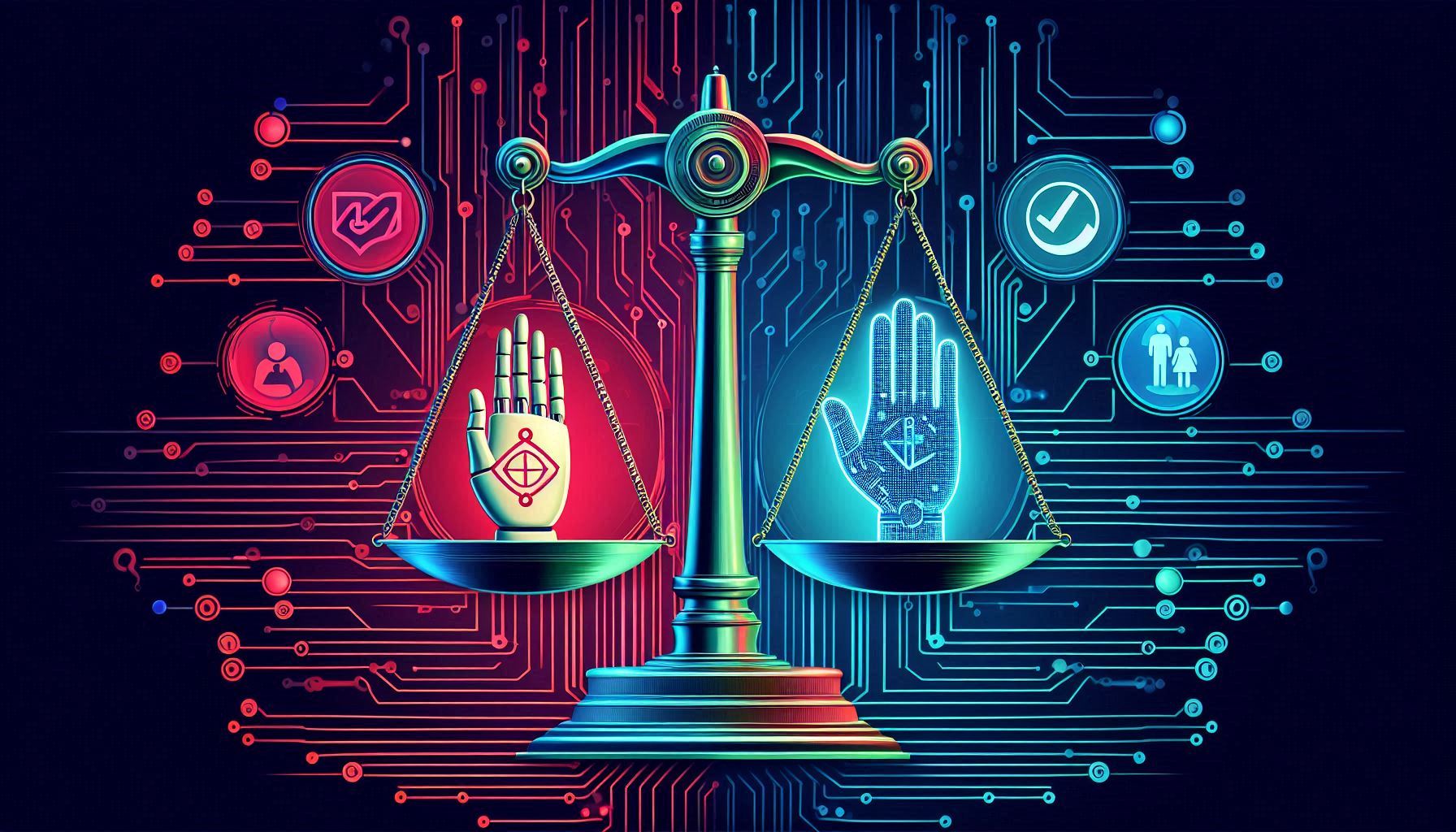Building Responsible AI Systems
Learn how to create ethical and responsible AI systems through bias mitigation, transparency, and human-centered design principles.
Chad Jipiti
AI Researcher

Building Responsible AI Systems
Responsible AI is not just a nice-to-have feature—it's a necessity. When we build AI systems that are ethical, transparent, and fair, we create a more equitable technological future. In this article, we'll explore how to create truly responsible AI systems.
Why Responsible AI Matters
Responsible AI ensures that artificial intelligence technologies are designed and deployed in ways that respect human autonomy, prevent harm, and distribute benefits fairly across society. According to recent studies, AI systems can perpetuate and even amplify existing social biases if not carefully designed.
When we build responsible AI systems, we're not just complying with emerging regulations—we're building sustainable technologies that earn user trust and minimize harmful societal impacts.
Key Responsible AI Principles
1. Bias Mitigation
One of the most critical aspects of responsible AI is identifying and mitigating biases. Models trained on historical data often reproduce historical inequities:
# Simple example of bias detection and mitigation
from aif360.datasets import BinaryLabelDataset
from aif360.metrics import BinaryLabelDatasetMetric
from aif360.algorithms.preprocessing import Reweighing
# Load potentially biased dataset
dataset = load_dataset()
# Convert to AIF360 format
aif_dataset = BinaryLabelDataset(df=dataset,
label_names=['outcome'],
protected_attribute_names=['sensitive_attribute'])
# Measure bias
metric = BinaryLabelDatasetMetric(aif_dataset,
unprivileged_groups=[{'sensitive_attribute': 0}],
privileged_groups=[{'sensitive_attribute': 1}])
# Disparate impact before mitigation
print(f"Disparate impact before: {metric.disparate_impact()}")
# Apply bias mitigation technique
rw = Reweighing(unprivileged_groups=[{'sensitive_attribute': 0}],
privileged_groups=[{'sensitive_attribute': 1}])
dataset_transformed = rw.fit_transform(aif_dataset)
# Measure bias after mitigation
metric_transformed = BinaryLabelDatasetMetric(dataset_transformed,
unprivileged_groups=[{'sensitive_attribute': 0}],
privileged_groups=[{'sensitive_attribute': 1}])
print(f"Disparate impact after: {metric_transformed.disparate_impact()}")
2. Explainability and Transparency
AI systems should not be black boxes. Users deserve to understand how decisions affecting them are made:
import shap
import numpy as np
from sklearn.ensemble import RandomForestClassifier
# Train a model
model = RandomForestClassifier()
model.fit(X_train, y_train)
# Create explainer
explainer = shap.TreeExplainer(model)
# Calculate SHAP values for a prediction
shap_values = explainer.shap_values(X_test[0:1])
# Visualize the explanation
def explain_prediction(model, instance, feature_names):
# Get prediction
prediction = model.predict(instance.reshape(1, -1))[0]
# Get feature contributions
shap_values = explainer.shap_values(instance.reshape(1, -1))
# Sort features by impact
indices = np.argsort(np.abs(shap_values[0]))
print(f"Prediction: {prediction}")
print("Feature contributions:")
for i in reversed(indices[-5:]): # Show top 5 features
print(f"{feature_names[i]}: {shap_values[0][i]:.4f}")
explain_prediction(model, X_test[0], feature_names)
3. Human-in-the-Loop Systems
AI systems should include human oversight, especially for high-stakes decisions:
# Example of a human-in-the-loop classification system
class HumanInTheLoopClassifier:
def __init__(self, model, confidence_threshold=0.9):
self.model = model
self.confidence_threshold = confidence_threshold
self.human_decisions = {}
def predict(self, instances):
# Get model predictions and confidences
predictions = []
requires_human = []
for i, instance in enumerate(instances):
# Check if we've seen this instance before and a human made a decision
instance_key = hash(tuple(instance))
if instance_key in self.human_decisions:
predictions.append(self.human_decisions[instance_key])
continue
# Get model prediction and confidence
probs = self.model.predict_proba([instance])[0]
confidence = np.max(probs)
prediction = np.argmax(probs)
# If confident enough, use model prediction
if confidence >= self.confidence_threshold:
predictions.append(prediction)
else:
# Otherwise, flag for human review
requires_human.append((i, instance, probs))
predictions.append(None) # Placeholder
return predictions, requires_human
def incorporate_human_feedback(self, instance, human_decision):
# Store human decision for this instance
instance_key = hash(tuple(instance))
self.human_decisions[instance_key] = human_decision
# Use this feedback to potentially improve the model
# (model updating code would go here)
Evaluating AI Systems for Responsibility
Comprehensive evaluation frameworks help identify ethical issues in AI systems, but they're not a substitute for diverse stakeholder engagement throughout the development process.
Tools and Frameworks to Consider:
- Ethical AI Impact Assessments: Evaluate potential societal impacts before deployment
- Diverse Testing Datasets: Test models on data representing diverse populations
- Fairness Metrics: Utilize statistical fairness measures such as equality of opportunity
- Red-teaming Exercises: Stress-test models with adversarial examples
Conclusion
Building responsible AI systems is a continuous journey, not a one-time task. By incorporating these ethical principles into your development workflow, you'll create AI technologies that are more equitable, transparent, and ultimately better aligned with human values and societal well-being.
As AI becomes increasingly integrated into critical aspects of our lives, our commitment to responsible design and implementation must grow proportionally. The most powerful AI systems aren't necessarily those with the most parameters or highest accuracy, but those that empower humans while respecting their autonomy and dignity.
Remember, accessibility benefits everyone—not just users with disabilities. The same practices that make your application accessible often make it more usable for all users and can improve your SEO as well.
Start small, be consistent, and continuously learn about accessibility best practices. Your users will thank you for it.